Why humpback whales or attack killer whales to protect other animals? Here is the answer
If you follow regularly, you won't be surprised to see humpback whales or assassinate whales. But why is that? Do they have some vengeance? Let's find out in the article below!
- Why does the flamingos stand on one leg forever but don't feel tired?
- The mystery of a giant 1.5-meter-long worm eating both hydrogen sulfide and rotten gas
- Top 11 exotic animals you may have heard for the first time
Killer whales can be considered as one of the most aggressive carnivores in the ocean, they are so scary that there are sharks in the " menu. " Not only possessing a huge, huge body, killer whales are also extremely intelligent animals when hunting, especially when working in groups.
But other humpback whales , despite their large bodies, can weigh up to 40 tons, but they are quite gentle and calm. Their main food is molluscs and small fish. Like bears, humpback whales only feed in the summer, and in the winter they fast and use the amount of stored fat in their bodies.
Many people believe that humpback whales can save seals, sea lions, moon fish and some other species with " confusion " but they may also be altruistic animals.
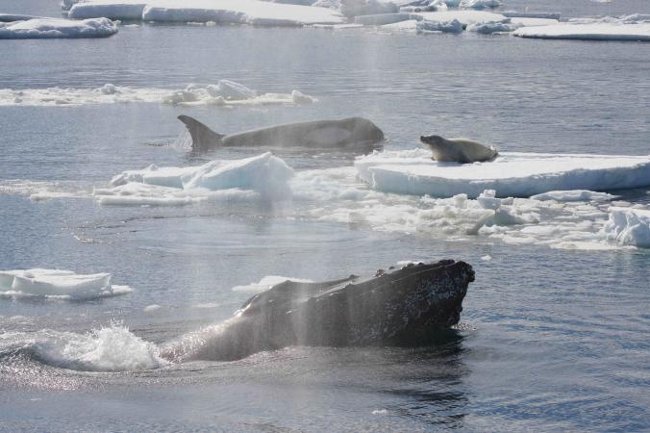 A Weddell seal was chased out of an iceberg by a group of killer whales and was about to become dinner, was rescued by a humpback whale in the waters off Antarctica.Photo source: ROBERT L. Pitman
A Weddell seal was chased out of an iceberg by a group of killer whales and was about to become dinner, was rescued by a humpback whale in the waters off Antarctica.Photo source: ROBERT L. Pitman
So why are humpback whales often attacking killer whales?
Humpback whales and killer whales are almost unrelated, there is no competition for food or territory, but there are often conflicting conflicts. If aggressive humpback whales like killer whales can be understood, they are quite gentle and calm.
In May 2012, researchers observed a group of killer whales attacking a gray whale and baby whales in Monterey Bay, California. After a fight, the whales were killed. What happens next can easily be explained.
Two humpback whales have been hitched to prevent killer whales or eels, attacking the gray whale. However, after the young gray whales were killed, more than 14 humpback whales - seemed to stop the goby eating gray whales.
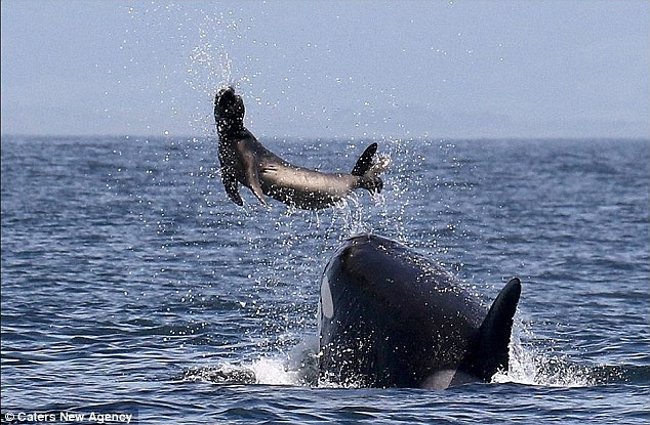
' A special humpback whale has appeared as a protective guard next to the bodies of young whales, head towards killer fish, body lying along the length of the body and emitting sounds. Strange bar, the tail that scares off killer whales should not eat baby whales , 'said Alisa Schulman-Janiger , a whale researcher at the California Killer Whale Project.
Within 6 hours and 30 minutes, humpback whales chased the killer whales away using their flippers and tails. Despite the discovery of nearby mollusks - a favorite dish of humpback whales - but these gentle giants don't leave their ' work '.
It is still unclear why this humpback whale is at risk of injury and energy consumption to protect other species. According to statistics, from 1951-2012, during the last 62 years, there are 115 encounters between humpback whales and killer whales recorded by 54 different observers, detailed reports published. in Marine Mammal Science magazine .
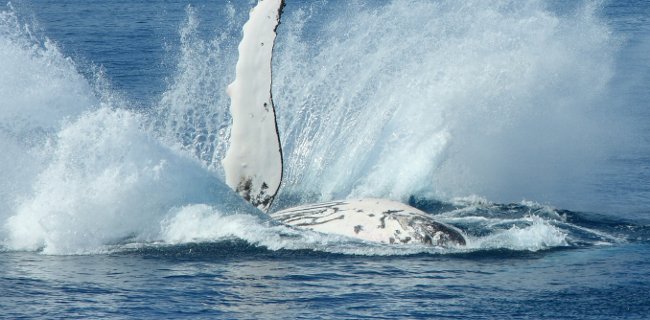
But what is worth mentioning here, in those encounters, is that 57% of them are hunchback started the war . This is quite a strange thing for animals that are considered very gentle when they actively seek out such wars. And the following 2 numbers will explain some of our questions! There are 87% of humpback whales occur when opponents are hunting and 89% of humpback whales are present in time when killer whales are attacking other animals .
Based on the figures given, many researchers argue that the main reason for humpback whales or actively attacking killer whales is because of " Altruism ". They performed an unbelievable " rescue screen " for other animals even if they were not of the same species.
' This humpback whale rescue activities continue to take place in many regions around the world. I have seen some of those encounters, but none is as serious as [the May 2012 event] , 'said study co-author Schulman-Janiger .This is still the interaction between humpback whales and the longest killer whale to this day.
What is happening?
The most logical biological explanation for behavior is like a humpback whale's " defense team " that whales receive some benefits from interfering with the killer whale's hunt.
For example, goby is known to be the most vulnerable to humpback whales and humpback whales, as a child. However, after fully maturing, just a humpback whale is large enough to be able to handle all of the killer whales. So perhaps the " rescue " behavior evolved as a way to help species overcome its " weakest life stage ".
" Because humpback whales tend to return to the feeding grounds and where they are born, in a certain area humpback whales tend to be associated with neighboring humpback whales ," said the chief. The research group Robert Pitman , NOAA marine ecologist and the National Geographic Society, said.
But there is a mystery in this explanation. What is special is that only 11% of humpback whales attack killer whales for a purpose , the rest are killer whales attacking other species rather than attacking their fellow species . This shows that this giant marine species not only protects their species but also protects other creatures such as California sea lions, moon fish, harbor seals and gray whales.
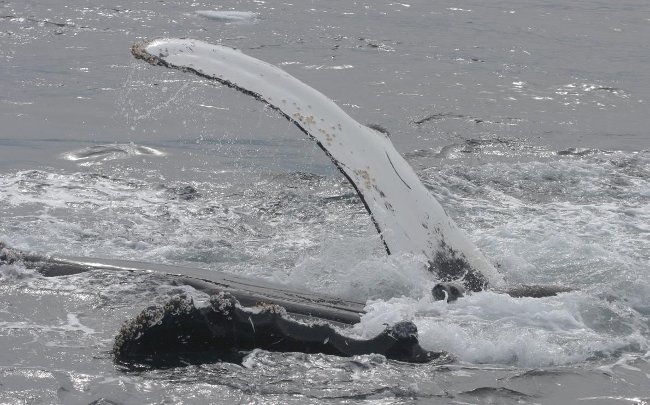 The Weddell seal is based on the chest of a humpback whale, safe during the assault by a killer whale.Photo source: ROBERT L. Pitman
The Weddell seal is based on the chest of a humpback whale, safe during the assault by a killer whale.Photo source: ROBERT L. Pitman
There is even an incident while humpback whales seem to try to save a pair of moonfish from the killer whale of the killer whale.
Maybe it's just an individual. Schulman-Janiger notes that not all humpback whales intervene in the hunt for killer whales and many other humpback whales also carry scars when attacked by eels, probably since childhood. So that may be due to what happened in the past so humpback whales respond to the hunt of killer whales.
The study also notes that humpback whales may be dealing with " hearing calls " by killer whales rather than animals they are hunting. This means that humpback whales do not know which species is being attacked until they " invest " energy in the battle.
Such behavior can exist in populations by many individuals who will benefit, humpback whales - seem to be enough to protect the interests of other species.
All for one, and one for all (roughly translated: "Everyone for me, I'm for everyone")
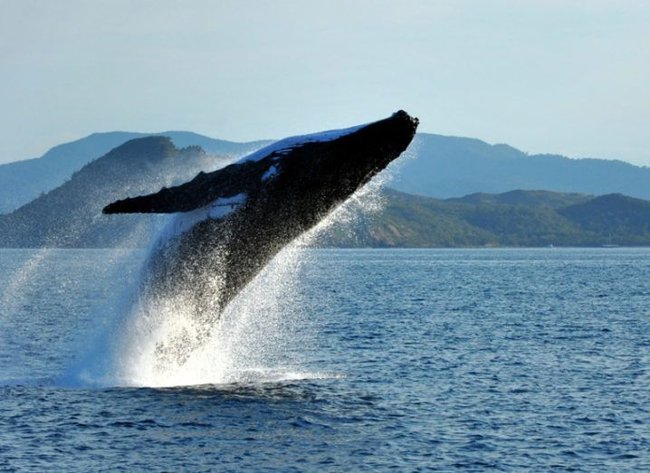
Other experts on whales see something more complicated, altruistic.
" Although this behavior is interesting, I am not surprised that a marine mammal interferes with members of another species ," said Lori Marino , a mammal expert and president of The Whale Sanctuary Project said.
" Humpback whales have the ability to think complexly, make decisions, solve problems and communicate. Therefore, implementing the properties of a species with a high level of intelligence development generally has the ability to empathize, "Marino, also the CEO of the Kimmela Center for Animal Advocacy Center.
Besides, humpback whales are not the only animals, they seem to be used to refer to some species related to other species. Dolphins are described as ' help ' dogs, whales and even humans. Although many of us often see similar things but can easily misunderstand the behavior of animals.
Whatever the humpback whale is doing, the benefits it gets from this process are obviously we need to learn more, both the mind and emotions of the animals next to us.
Pitman says animals tend to do what is most beneficial to themselves, even if their emotions are not entirely clear to us.
" Biologists think that is where we should start looking for an explanation, " Pitman said.
Having fun!
You should read it
- Detecting dead bodies of humpback whales on the coast of Sea Isle City, USA
- Killer whales and 5 incredible facts about them
- The pursuit of killer whales kill the whales 12 meters long
- How do whales survive and breastfeed in the ocean?
- Video: Killer whale battle great gray whale, who is the sea king?
- Very rare white killer whales found
- Dumb fish and 11 misunderstandings about animals
- Why do hundreds of whales and dolphins 'collective suicide'?
May be interested
- Why do hundreds of whales and dolphins 'collective suicide'?
 in recent studies, scientists believe they have found the reason for the large-scale suicide of whales and dolphins.
in recent studies, scientists believe they have found the reason for the large-scale suicide of whales and dolphins. - Top phones named Flagship killer in 2022
 flagships are high-end phones with leading new features and technologies, and they don't come cheap. meanwhile, flagship killers are phones with similar hardware to flagships but at a much cheaper price.
flagships are high-end phones with leading new features and technologies, and they don't come cheap. meanwhile, flagship killers are phones with similar hardware to flagships but at a much cheaper price. - Latest Survive The Killer Code and How to Enter Code
 survive the killer code to get knives, money, exp and more in the game. this will help you achieve the game content easily without spending much time in the game.
survive the killer code to get knives, money, exp and more in the game. this will help you achieve the game content easily without spending much time in the game. - What is 51% attack? How does 51% attack work?
 the 51% attack refers to a potential attack on the integrity of the blockchain system, in which a single malicious actor or organization tries to control more than half of the network's total hash power, .
the 51% attack refers to a potential attack on the integrity of the blockchain system, in which a single malicious actor or organization tries to control more than half of the network's total hash power, . - Using USB Killer to destroy school computers, alumni face prison sentences of up to 10 years
 akuthota used a usb killer device to install 66 computers in the school, causing the device to be badly damaged.
akuthota used a usb killer device to install 66 computers in the school, causing the device to be badly damaged. - Prepare to face MPACK
 in this article we will introduce a new technology attack being implemented on the internet today. this new attack comes from the mpack kit, coming from attacks outside the united states. there are many ways to protect yourself, though
in this article we will introduce a new technology attack being implemented on the internet today. this new attack comes from the mpack kit, coming from attacks outside the united states. there are many ways to protect yourself, though - New FileFix Attack Can Bypass Windows MoTW: How to Protect Your Computer?
 filefix is a new attack method that takes advantage of the way windows and browsers handle the html web page saving process to bypass windows security checks.
filefix is a new attack method that takes advantage of the way windows and browsers handle the html web page saving process to bypass windows security checks. - How to install and use Task Killer on the computer
 this article will guide you to install and use task killer on your computer. here's a quick way to close background apps and free up ram.
this article will guide you to install and use task killer on your computer. here's a quick way to close background apps and free up ram. - Steps to protect email against malicious threats
 the following ways seem to be very simple and popular, to the extent that 'everyone knows and of course', but not everyone seriously takes it to stay away from any risk of fraud or malicious code attacks.
the following ways seem to be very simple and popular, to the extent that 'everyone knows and of course', but not everyone seriously takes it to stay away from any risk of fraud or malicious code attacks. - ZIP bomb can protect websites from hackers
 website owners can now use a tool called zip bomb to damage the port scanner, hacker website vulnerability and prevent him from accessing his website.
website owners can now use a tool called zip bomb to damage the port scanner, hacker website vulnerability and prevent him from accessing his website.










 T-rex dinosaur confronts Titanoboa, the largest giant python in Earth's history
T-rex dinosaur confronts Titanoboa, the largest giant python in Earth's history The blue-spotted octopus has 50 times more venom than a cobra that kills people in an instant
The blue-spotted octopus has 50 times more venom than a cobra that kills people in an instant Tyrannosaurus T-rex and Giganotosaurus, which one will win?
Tyrannosaurus T-rex and Giganotosaurus, which one will win? 10 incredible facts about languages - how animals communicate
10 incredible facts about languages - how animals communicate The poisonous sea turtle tugs the jellyfish eat voraciously
The poisonous sea turtle tugs the jellyfish eat voraciously The world's largest iceberg, 1,000 billion tons weighed off Antarctica
The world's largest iceberg, 1,000 billion tons weighed off Antarctica